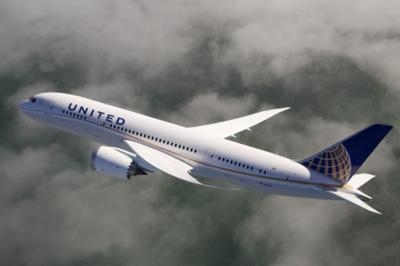Thu, Mar 23, 2017
Releases Annual Aerospace Forecast Report
The FAA has released its annual Aerospace Forecast Report Fiscal Years 2017 to 2037, which projects sustained and continued growth in nearly every aspect of air transportation from general aviation private flying to large commercial airline passenger levels.

In commercial air travel, Revenue Passenger Miles (RPMs) are considered the benchmark for measuring aviation growth. An RPM represents one revenue passenger traveling one mile. The FAA forecast calls for system RPMs by mainline and regional air carriers to grow at an average rate of 2.4 percent per year between 2016 and 2037, with international RPMs projected for average annual increases of 3.4 percent per year. System RPMs are forecast to increase 65 percent during the 20-year forecast.
A key new portion of the forecast focuses on the growth in the use of Unmanned Aircraft Systems (UAS), also known as drones. The FAA projects the small model hobbyist UAS fleet to more than triple in size from an estimated 1.1 million vehicles at the end of 2016 to more than 3.5 million units by 2021. The commercial, non-hobbyist UAS fleet is forecast to grow from 42,000 at the end of 2016 to about 442,000 aircraft by 2021, with an upside possibility of as many as 1.6 million UAS in use by 2021. Pilots of these UAS vehicles are expected to increase from 20,000 at the end of 2016 to a range of 10 to 20 times as many by 2021.

Predictions for small UAS are more difficult to develop given the dynamic, quickly-evolving market. The FAA has provided high and low ranges around the hobbyist forecast, reflecting uncertainty about the public’s continued adoption of this new technology. The FAA’s non-hobbyist (commercial) UAS fleet size forecasts contain certain broad assumptions about operating limitations for small UAS during the next five years based on the basic constraints of the existing regulations: daytime operations, within visual line of sight, and a single pilot operating only one small UAS at a time. he main difference in the high and low end of the forecasts is differing assumptions about how quickly the regulatory environment will evolve, enabling more widespread routine uses of UAS for commercial purposes.
The FAA utilizes a variety of economic data and projections to develop its annual forecast, such as generally accepted projections for the nation’s Gross Domestic Product (GDP). The FAA annual forecast is consistently considered the industry-wide standard of U.S. aviation-related activities. The report looks at all facets of air travel including commercial airlines, air cargo, private general aviation, and fleet sizes.
(Source: FAA news release. Images from file)
More News
Airbus Racer Demonstrator Makes Inaugural Flight Airbus Helicopters' ambitious Racer demonstrator has achieved its inaugural flight as part of the Clean Sky 2 initiative, a corners>[...]
A little Bit Quieter, Said Testers, But in the End it's Still a DA40 Diamond Aircraft recently completed a little pilot project with Lufthansa Aviation Training, putting a pair of >[...]
Line Up And Wait (LUAW) Used by ATC to inform a pilot to taxi onto the departure runway to line up and wait. It is not authorization for takeoff. It is used when takeoff clearance >[...]
Contributing To The Accident Was The Pilot’s Use Of Methamphetamine... Analysis: The pilot departed on a local flight to perform low-altitude maneuvers in a nearby desert val>[...]
From 2015 (YouTube Version): Overcoming Obstacles To Achieve Their Dreams… At EAA AirVenture 2015, FedEx arrived with one of their Airbus freight-hauling aircraft and placed>[...]
 Airbus Racer Helicopter Demonstrator First Flight Part of Clean Sky 2 Initiative
Airbus Racer Helicopter Demonstrator First Flight Part of Clean Sky 2 Initiative Diamond's Electric DA40 Finds Fans at Dübendorf
Diamond's Electric DA40 Finds Fans at Dübendorf ANN's Daily Aero-Term (04.23.24): Line Up And Wait (LUAW)
ANN's Daily Aero-Term (04.23.24): Line Up And Wait (LUAW) NTSB Final Report: Extra Flugzeugbau GMBH EA300/L
NTSB Final Report: Extra Flugzeugbau GMBH EA300/L Classic Aero-TV: 'Never Give Up' - Advice From Two of FedEx's Female Captains
Classic Aero-TV: 'Never Give Up' - Advice From Two of FedEx's Female Captains




